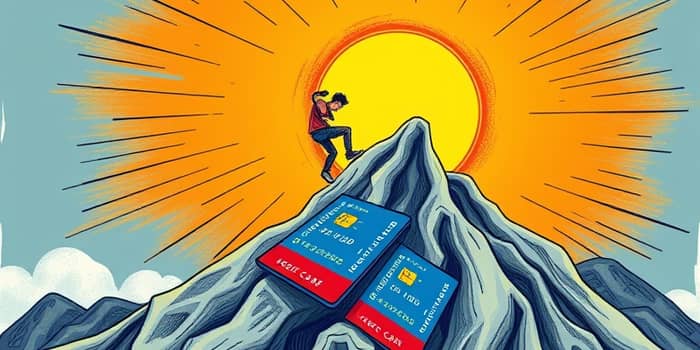
Credit card debt has become a defining financial challenge for millions of Americans in recent years. With balances soaring and interest rates steadily climbing, many individuals find themselves struggling to keep up with minimum payments, let alone chip away at the principal. This mounting burden can lead to chronic stress, sleepless nights, and a diminished quality of life. Fortunately, there is a way out. By adopting disciplined habits, leveraging structured repayment strategies, and arming yourself with relevant data, you can transform your situation and move steadily toward a debt-free future.
In this comprehensive guide, we present proven strategies to pay off debt efficiently while also addressing the psychological hurdles that often stall progress. Whether you are carrying one large balance or juggling multiple high-rate cards, the techniques shared here will empower you to regain control of your finances and build a stronger credit profile for the years to come. Read on to discover actionable steps and expert insights designed to simplify your journey.
Before diving into a payoff plan, you must appreciate the magnitude of the challenge. As of the first quarter of 2025, consumers in the U.S. collectively hold over $1.18 trillion in credit card balances. Though the average household balance of $10,757 is slightly below the 2007 peak, the current average APR on debt of 23.37% means interest charges can accumulate rapidly, transforming manageable purchases into long-term financial obstacles.
Even though the delinquency rate hovers near historic lows at 3.18%, many borrowers feel the pinch each month, allocating a large portion of their budget just to meet minimum payment requirements. Understanding these figures helps clarify why simply making the minimum payment often amounts to paying interest for years without significantly reducing your principal balance.
With a clear grasp of the numbers, you can select a targeted method to accelerate debt elimination. Two of the most widely endorsed approaches are the Avalanche and the Snowball, each designed to leverage psychological or mathematical advantages to keep you focused and motivated.
Beyond structured methods, integrating certain habits into your routine can significantly reduce the time it takes to wipe out credit card debt. These small but impactful adjustments reinforce disciplined behavior and shield you from future financial pitfalls.
Commitment to a repayment plan often falters when unexpected expenses arise. To counteract this, it’s critical to establish an emergency fund of at least one month’s living expenses. This financial buffer reduces the likelihood that you’ll resort to credit cards when medical bills or vehicle repairs strike. Additionally, adopting a zero-based budget—where every dollar is assigned a purpose—can help you track cash flow and eliminate guesswork.
Maintaining motivation over the long haul also requires acknowledging small victories. Visual trackers, such as balance payoff charts or progress thermometers, provide tangible evidence of success. Celebrate milestones like paying off individual cards or hitting the halfway mark on a major balance. These psychological rewards can reinforce positive habits and keep momentum strong.
Today's financial environment is shaped by inflationary pressures, rising living costs, and evolving consumer behaviors. Many households have increased their reliance on revolving credit to cover everyday expenses, leading to a surge in credit card balances. By staying informed about interest rate movements and economic forecasts, you can seize opportunities to refinance high-rate debt, negotiate with lenders, or adjust your repayment strategy accordingly.
For example, during periods of low rates, locking in a consolidation loan could yield substantial savings compared to running up balances at prime plus high spreads on credit cards. Similarly, promotional offers on balance transfers become especially valuable when market rates climb, providing a temporary respite from interest accumulation.
Paying off credit card debt is an ambitious yet fully achievable goal when approached with the right blend of strategy, consistency, and mindfulness. By selecting a repayment method aligned with your financial priorities—whether the mathematically efficient Avalanche or the psychologically motivating Snowball—supplementing it with balance transfers or consolidation loans, and reinforcing your plan with supportive habits, you can significantly reduce both the time and cost associated with high-interest debts.
Embark on this journey with clear objectives, track your progress diligently, and celebrate each step forward. As you watch your balances shrink, you’ll not only save money on interest but also open the door to new opportunities—be they investing for the future, building a robust emergency fund, or simply enjoying the peace of mind that comes with financial freedom.
References













